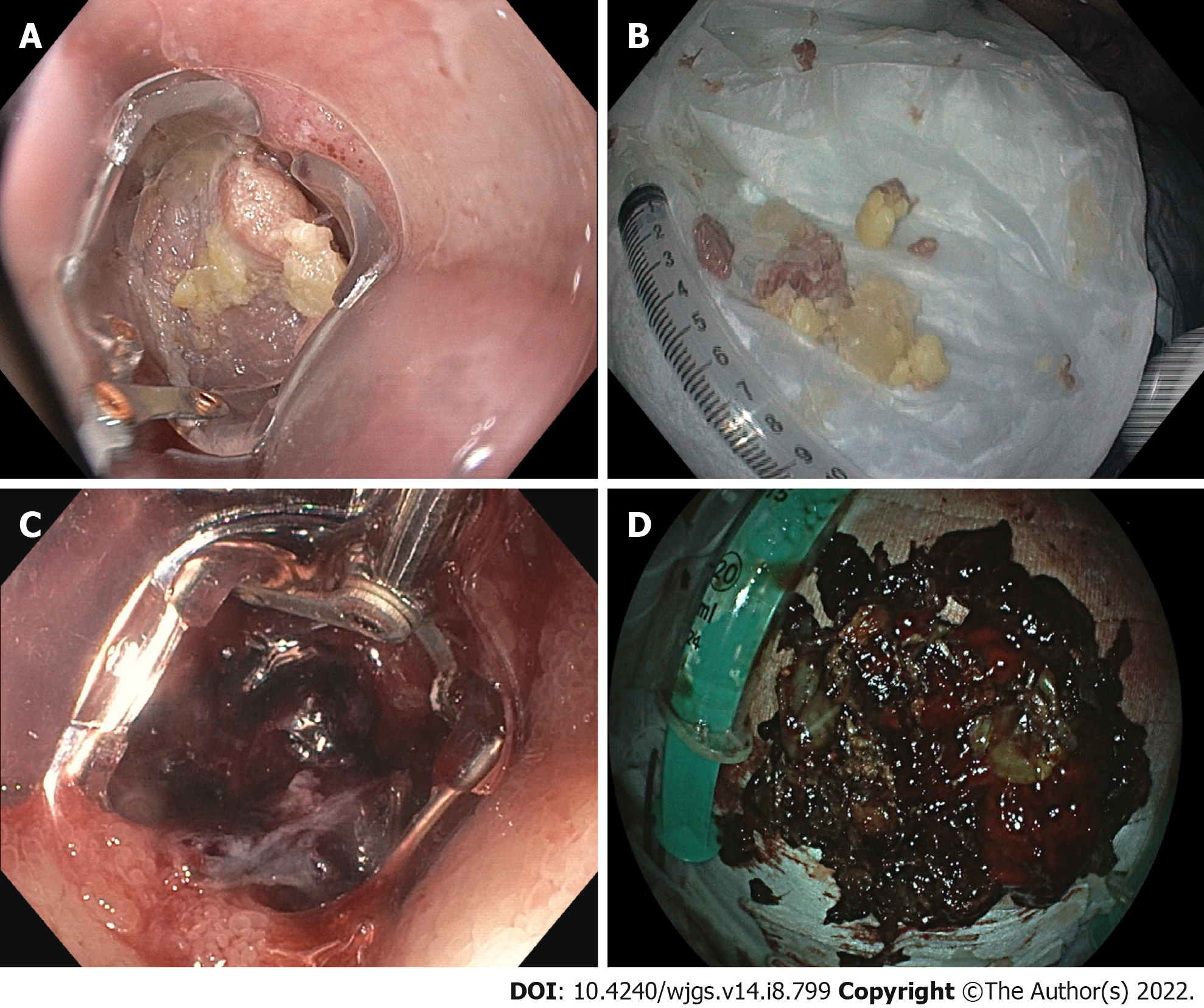Copyright
©The Author(s) 2022.
World J Gastrointest Surg. Aug 27, 2022; 14(8): 799-808
Published online Aug 27, 2022. doi: 10.4240/wjgs.v14.i8.799
Published online Aug 27, 2022. doi: 10.4240/wjgs.v14.i8.799
Figure 1 Over-the-scope-grasper attached to an endoscope.
A: Open position; B: Closed position. With permission from Ovesco Endoscopy AG, Tübingen, Germany. Available from: http://www.ovesco.com/de.
Figure 2 Application of the over-the-scope-grasper in pancreatic necrosectomy through a lumen apposing metal stent.
A: Insertion into the necrotic cavity; B: Opening the device; C: Grasping necrotic tissue; D: Withdrawal from the necrotic cavity; E: Flushing out the tissue by irrigation. LAMS: Lumen apposing metal stent. With permission from Ovesco Endoscopy AG, Tübingen, Germany. Available from: http://www.ovesco.com/de.
Figure 3 Pancreatic necrosectomy through a lumen apposing metal stent with the over-the-scope-grasper.
A: Insertion through the lumen apposing metal stent; B: Opening the device inside the necrosis; C: Grasping necrotic tissue; D: Cleaned necrotic cavity.
Figure 4 Removing food bolus and blood clots with the over-the-scope-grasper.
A: Grasping a meat chunk in the esophagus; B: Food pieces removed with the new device; C: Grasping a duodenal blood clot; D: Blood clots removed from the stomach with the new device.
- Citation: Brand M, Bachmann J, Schlag C, Huegle U, Rahman I, Wedi E, Walter B, Möschler O, Sturm L, Meining A. Over-the-scope-grasper: A new tool for pancreatic necrosectomy and beyond - first multicenter experience. World J Gastrointest Surg 2022; 14(8): 799-808
- URL: https://www.wjgnet.com/1948-9366/full/v14/i8/799.htm
- DOI: https://dx.doi.org/10.4240/wjgs.v14.i8.799












